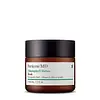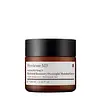What's inside
What's inside
 Key Ingredients
Key Ingredients

 Benefits
Benefits

 Concerns
Concerns

 Ingredients Side-by-side
Ingredients Side-by-side

Water
Skin ConditioningGlycerin
HumectantBentonite
AbsorbentPEG-40 Hydrogenated Castor Oil
EmulsifyingCI 77891
Cosmetic ColorantCoco-Caprylate
EmollientMagnesium Aluminum Silicate
AbsorbentDiglycerin
HumectantMannitol
HumectantButylene Glycol
HumectantMethyl Gluceth-20
HumectantMicrocrystalline Cellulose
AbsorbentDimethylaminoethanol Tartrate
EmollientEthylhexylglycerin
Skin ConditioningXanthan Gum
EmulsifyingBromelain
Skin ConditioningPapain
Skin ConditioningAllantoin
Skin ConditioningMagnesium Aspartate
Skin ConditioningZinc Gluconate
Skin ConditioningBeta-Glucan
Skin ConditioningChlorophyllin-Copper Complex
AntioxidantCopper Gluconate
Skin ConditioningNasturtium Officinale Flower/Leaf Extract
AntiseborrhoeicCamellia Sinensis Leaf Extract
AntimicrobialSpirulina Platensis Extract
Skin ProtectingCitric Acid
BufferingSodium Benzotriazolyl Butylphenol Sulfonate
UV AbsorberDisodium EDTA
Maltodextrin
AbsorbentPolyacrylamide
Caprylyl Glycol
EmollientButeth-3
SolventC13-14 Isoparaffin
EmollientHexylene Glycol
EmulsifyingAcrylates Copolymer
Laureth-7
EmulsifyingPropylene Glycol
HumectantHydroxypropyl Methylcellulose
Emulsion StabilisingTributyl Citrate
SolventPhenoxyethanol
PreservativePotassium Sorbate
PreservativeSodium Benzoate
MaskingEucalyptus Globulus Leaf Oil
PerfumingCI 77492
Cosmetic ColorantCI 77289
Cosmetic ColorantCI 77120
Cosmetic ColorantCI 77499
Cosmetic ColorantSilica
AbrasiveWater, Glycerin, Bentonite, PEG-40 Hydrogenated Castor Oil, CI 77891, Coco-Caprylate, Magnesium Aluminum Silicate, Diglycerin, Mannitol, Butylene Glycol, Methyl Gluceth-20, Microcrystalline Cellulose, Dimethylaminoethanol Tartrate, Ethylhexylglycerin, Xanthan Gum, Bromelain, Papain, Allantoin, Magnesium Aspartate, Zinc Gluconate, Beta-Glucan, Chlorophyllin-Copper Complex, Copper Gluconate, Nasturtium Officinale Flower/Leaf Extract, Camellia Sinensis Leaf Extract, Spirulina Platensis Extract, Citric Acid, Sodium Benzotriazolyl Butylphenol Sulfonate, Disodium EDTA, Maltodextrin, Polyacrylamide, Caprylyl Glycol, Buteth-3, C13-14 Isoparaffin, Hexylene Glycol, Acrylates Copolymer, Laureth-7, Propylene Glycol, Hydroxypropyl Methylcellulose, Tributyl Citrate, Phenoxyethanol, Potassium Sorbate, Sodium Benzoate, Eucalyptus Globulus Leaf Oil, CI 77492, CI 77289, CI 77120, CI 77499, Silica
Water
Skin ConditioningCaprylic/Capric Triglyceride
MaskingC12-15 Alkyl Benzoate
AntimicrobialPropanediol
SolventShea Butter Ethyl Esters
EmollientDicaprylyl Carbonate
EmollientCetearyl Alcohol
EmollientDimethicone
EmollientSqualane
EmollientBehenyl Alcohol
EmollientHydrogenated Vegetable Glycerides
EmollientIsoamyl Laurate
EmollientAleurites Moluccanus Seed Oil
Skin ConditioningGlyceryl Stearate
EmollientPEG-100 Stearate
Hydrogenated Vegetable Oil
EmollientHydrogenated Soybean Oil
EmollientCeteareth-20
CleansingGlycerin
HumectantPhenoxyethanol
PreservativePolysilicone-11
Sodium Stearoyl Glutamate
CleansingHydrogenated Olive Oil
Skin ConditioningCitric Acid
BufferingDimethyl Mea
BufferingPetrolatum
EmollientHydrogenated Jojoba Oil
AbrasiveEthylhexylglycerin
Skin ConditioningRetinol
Skin ConditioningRetinyl Linoleate
Skin ConditioningXanthan Gum
EmulsifyingPolysorbate 20
EmulsifyingParfum
MaskingTetrasodium Glutamate Diacetate
Helianthus Annuus Seed Oil
EmollientGlycine Soja Lipids
Skin ConditioningMaltodextrin
AbsorbentPentylene Glycol
Skin ConditioningCetyl Palmitate
EmollientLaureth-23
CleansingDisodium Acetyl Glucosamine Phosphate
Skin ConditioningSodium Glucuronate
HumectantNephelium Lappaceum Leaf Extract
Skin ConditioningSodium Acetylated Hyaluronate
HumectantSodium Hyaluronate
HumectantCeramide NP
Skin ConditioningSodium Hydroxide
BufferingTrideceth-6 Phosphate
EmulsifyingMagnesium Aspartate
Skin ConditioningZinc Gluconate
Skin ConditioningRosmarinus Officinalis Leaf Extract
AntimicrobialMagnesium Sulfate
Sodium Hyaluronate Crosspolymer
HumectantHyaluronic Acid
HumectantPhytosterols
Skin ConditioningTocopherol
AntioxidantCopper Gluconate
Skin ConditioningCitronellol
PerfumingGeraniol
PerfumingHydroxycitronellal
PerfumingEugenol
PerfumingWater, Caprylic/Capric Triglyceride, C12-15 Alkyl Benzoate, Propanediol, Shea Butter Ethyl Esters, Dicaprylyl Carbonate, Cetearyl Alcohol, Dimethicone, Squalane, Behenyl Alcohol, Hydrogenated Vegetable Glycerides, Isoamyl Laurate, Aleurites Moluccanus Seed Oil, Glyceryl Stearate, PEG-100 Stearate, Hydrogenated Vegetable Oil, Hydrogenated Soybean Oil, Ceteareth-20, Glycerin, Phenoxyethanol, Polysilicone-11, Sodium Stearoyl Glutamate, Hydrogenated Olive Oil, Citric Acid, Dimethyl Mea, Petrolatum, Hydrogenated Jojoba Oil, Ethylhexylglycerin, Retinol, Retinyl Linoleate, Xanthan Gum, Polysorbate 20, Parfum, Tetrasodium Glutamate Diacetate, Helianthus Annuus Seed Oil, Glycine Soja Lipids, Maltodextrin, Pentylene Glycol, Cetyl Palmitate, Laureth-23, Disodium Acetyl Glucosamine Phosphate, Sodium Glucuronate, Nephelium Lappaceum Leaf Extract, Sodium Acetylated Hyaluronate, Sodium Hyaluronate, Ceramide NP, Sodium Hydroxide, Trideceth-6 Phosphate, Magnesium Aspartate, Zinc Gluconate, Rosmarinus Officinalis Leaf Extract, Magnesium Sulfate, Sodium Hyaluronate Crosspolymer, Hyaluronic Acid, Phytosterols, Tocopherol, Copper Gluconate, Citronellol, Geraniol, Hydroxycitronellal, Eugenol
Ingredients Explained
These ingredients are found in both products.
Ingredients higher up in an ingredient list are typically present in a larger amount.
Citric Acid is an alpha hydroxy acid (AHA) naturally found in citrus fruits like oranges, lemons, and limes.
Like other AHAs, citric acid can exfoliate skin by breaking down the bonds that hold dead skin cells together. This helps reveal smoother and brighter skin underneath.
However, this exfoliating effect only happens at high concentrations (20%) which can be hard to find in cosmetic products.
Due to this, citric acid is usually included in small amounts as a pH adjuster. This helps keep products slightly more acidic and compatible with skin's natural pH.
In skincare formulas, citric acid can:
While it can provide some skin benefits, research shows lactic acid and glycolic acid are generally more effective and less irritating exfoliants.
Most citric acid used in skincare today is made by fermenting sugars (usually from molasses). This synthetic version is identical to the natural citrus form but easier to stabilize and use in formulations.
Read more about some other popular AHA's here:
Learn more about Citric AcidThis ingredient is a copper salt known for its wound healing properties.
Our bodies use copper to help stabilize our skin's collagen and elastin. Its also an essential for superoxide dismutase, an enzyme with strong antioxidant properties.
Copper has wound healing properties due to its role in creating new blood vessels and tissue repair.
Learn more about Copper GluconateEthylhexylglycerin (we can't pronounce this either) is commonly used as a preservative and skin softener. It is derived from glyceryl.
You might see Ethylhexylglycerin often paired with other preservatives such as phenoxyethanol. Ethylhexylglycerin has been found to increase the effectiveness of these other preservatives.
Glycerin is already naturally found in your skin. It helps moisturize and protect your skin.
A study from 2016 found glycerin to be more effective as a humectant than AHAs and hyaluronic acid.
As a humectant, it helps the skin stay hydrated by pulling moisture to your skin. The low molecular weight of glycerin allows it to pull moisture into the deeper layers of your skin.
Hydrated skin improves your skin barrier; Your skin barrier helps protect against irritants and bacteria.
Glycerin has also been found to have antimicrobial and antiviral properties. Due to these properties, glycerin is often used in wound and burn treatments.
In cosmetics, glycerin is usually derived from plants such as soybean or palm. However, it can also be sourced from animals, such as tallow or animal fat.
This ingredient is organic, colorless, odorless, and non-toxic.
Glycerin is the name for this ingredient in American English. British English uses Glycerol/Glycerine.
Learn more about GlycerinWe don't have a description for Magnesium Aspartate yet.
Maltodextrin is a polysaccharide. It is derived from starch such as rice, corn, wheat, or potato starch.
In food, Maltodextrin is used to improve the texture and thicken a product. Due to its structure, it can help create a gel texture. As an emulsion stabilizer, it helps keep the ingredients in a product together.
As a polysaccharide, Maltodextrin has moisturizing properties. Polysaccharides are a type of carbohydrate. The top layer of skin uses polysaccharides to retain water, keeping the skin hydrated.
Maltodextrin is water soluble and has a sweet taste.
Learn more about MaltodextrinPhenoxyethanol is a preservative that has germicide, antimicrobial, and aromatic properties. Studies show that phenoxyethanol can prevent microbial growth. By itself, it has a scent that is similar to that of a rose.
It's often used in formulations along with Caprylyl Glycol to preserve the shelf life of products.
Water. It's the most common cosmetic ingredient of all. You'll usually see it at the top of ingredient lists, meaning that it makes up the largest part of the product.
So why is it so popular? Water most often acts as a solvent - this means that it helps dissolve other ingredients into the formulation.
You'll also recognize water as that liquid we all need to stay alive. If you see this, drink a glass of water. Stay hydrated!
Learn more about WaterXanthan gum is used as a stabilizer and thickener within cosmetic products. It helps give products a sticky, thick feeling - preventing them from being too runny.
On the technical side of things, xanthan gum is a polysaccharide - a combination consisting of multiple sugar molecules bonded together.
Xanthan gum is a pretty common and great ingredient. It is a natural, non-toxic, non-irritating ingredient that is also commonly used in food products.
Learn more about Xanthan GumZinc gluconate has antibacterial and wound healing properties. It is particularly effective against fighting inflammatory acne.
This ingredient is the zinc salt of the PHA gluconic acid. PHAs are gentle cousins to AHAs.